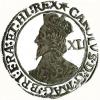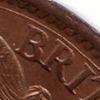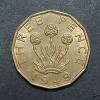Leaderboard
Popular Content
Showing content with the highest reputation on 11/26/2022 in Posts
-
I have collected them all off ebay over the last 5 years. I have not bought many the last year I wouldn't know where to begin outside ebay. I have several hundred now. It's been one of the most interesting things I've collected since I started collecting 7 years ago. I sometimes find small hoards with 40 or 50 of the same type which has made wonder if they were distributed in a number of different ways. My sets come mostly the US. I think I'm almost done collecting now though .1 point
-
1 point
-
1 point
-
1 point
-
1 point
-
No, I just save any images of coin tickets I think might be useful later and this was one I spotted. The other ticket is a Baldwins one in Michael Sharp's hand. Hopefully both are still with the coin.1 point
-
1 point
-
I think I almost have a full set the half penny I dont think is listed I have sovereign through to half penny. I have a couple of new ones which have a new borders and a new florin variety , somehow the hairy heads looks better than the Lauer Edward VII's1 point
-
1 point
-
1 point
-
You know I have looked at this sale for a while and didn't say anything but feel the Emperor's New Clothes syndrome setting in with me. What I have to say is: "what on Earth?".. I have issues with the first 1853 groat listed as currency (IMHO not at all), and then the "currency" 3ds from earlier Victoria: Not inclusive but the key dates of 1846, 1847, 1848, 1852 and 1853 NOT in my opinion currency despite their being graded as such. These coins all have the classic Maundy appearance with typical strikes and appearance as such and not even the occasional tricky satin format that they will occasionally appear as. I do not know the consignor and bear him/her no ill will unless they were witting in the sale of same. And also shame on NGC for their designations. Without digressing too far, clearly many of the early Victorian Maundy are not ideal representations of the genre, though I have seen some superb strikes, and so occasionally central details like Victoria's hair, etc. may come flat and ill-defined, the denticles may be a bit mushy and strike perhaps a bit uneven. However the strikes have a fairly typical appearance despite all that, and the difference perhaps a bit more clear when compared to clear currency pieces not worn. Obviously worn pieces are more difficult to discriminate, but these obviously not. It is my humble opinion that with such coins it likely best to assume Maundy status on the 3d and then if possible PROVE that it is currency. The same is analogously true for the 1853 groat that is prohibitively rare in true currency and not proof status although even in proof is cerainly scarce; (incidentally, the recent proof offered by Colin Cooke designated as such is of a rare later obverse type). What do readers think?1 point
-
Clashed dies. The Striking surfaces have come together without the planchet (Bronze blank) in place, the raised portions have been struck onto the opposing die and resulted in the features described. The line between the lighthouse and Britt's hand is Vicks cleavage line, a faint outline can be seen of Vicks face just above. The other lines described are the folds in drapery1 point
-
Losing the will to live here. For 1860, J & JA are given as sign on cape and JB as sign on cape away from edge. It's obviously not very important as it isn't illustrated, but please could someone give me a clue what the difference looks like given all are supposedly the same obverse D. Next question - what is special about the four repairs to Jd, Je, Jh and Jk which caused Gouby to list them? These are just a few examples amongst many of legend repairs, so what sets them apart? e.g. this thing here has repairs to CIDBRITRF&D, with the first T of BRITT partially filled, and the number of F10s produced dictates there will be many examples of repairs, to the extent that it's questionable whether they are worth recording as varieties for the general collector unless doing an in-depth die study. Ta.1 point
-
Rob I'm not sure where you found that JB has the signature in a different place. As you say, they are all obverse D (Freeman 2). I agree about the Je to Jk repairs. I'm assuming that collectors have sent in photos of these repairs to Michael who decided to include them, purely for illustration. The list of die repairs is virtually endless and I personally don't regard them as particularly noteworthy, other than the occasional spectacular example, e.g. N over Z, E over P etc. Clearly, these repairs are of interest to some collectors, viz Larry's numerous examples of similar repairs on halfpennies on this Forum.1 point
-
The obvious answer is that when the bronze coinage was introduced the Mint faced many challenges involving short lived dies. Very many die pairings were tried out, without long term success. By 1863 much of this had been overcome when the best working die pairings had been put into effect, 6 + G for pennies, 7 + G for halfpennies and 3 + B for farthings. That combination of die pairings then remained in effect until the next major changes in 1874.1 point





.jpg.a04648edece3e42d55f2e16af167c3fd.jpg)
.jpg.ec5c9f324a4554a26c2089421ce498b9.jpg)
.jpg.0111eaaa0980feb9c9baea4476e33ffe.jpg)
.jpg.997401a2f3691b63fe6d25e5ab3cd5e0.jpg)
.jpg.128a9665dbd1aa96eb1511d54d9817b1.jpg)
.jpg.a70179dea123252736e1327be0414240.jpg)
.jpg.8ff58982d2c5cb8aadaa7579b2bb6358.jpg)
.jpg.b5bd386db73323b8e420e37d8027a97e.jpg)
.jpg.f7d1625bf26b29fcf74a8f3ac32e6090.jpg)
.jpg.5ed4ea39ad8bbd315ef2ae06d0d7ddae.jpg)
.jpg.0bf6441ab35f066026307ee4da7a3045.jpg)
.jpg.80c5be94011f34e2b51671b2ca9d7c13.jpg)
.jpg.631579ceec7f83f8d36049c02fee9330.jpg)





